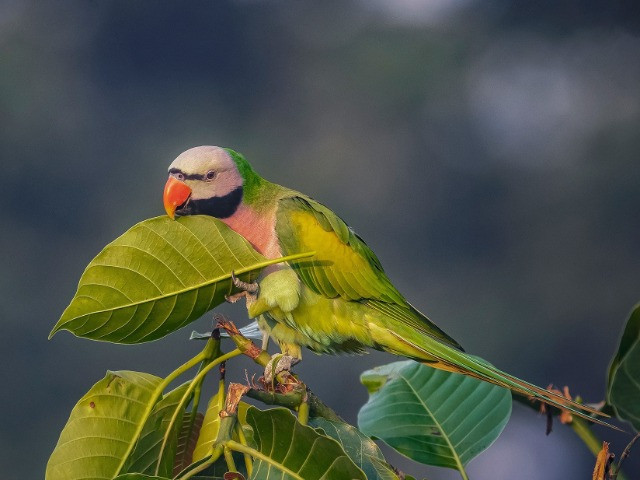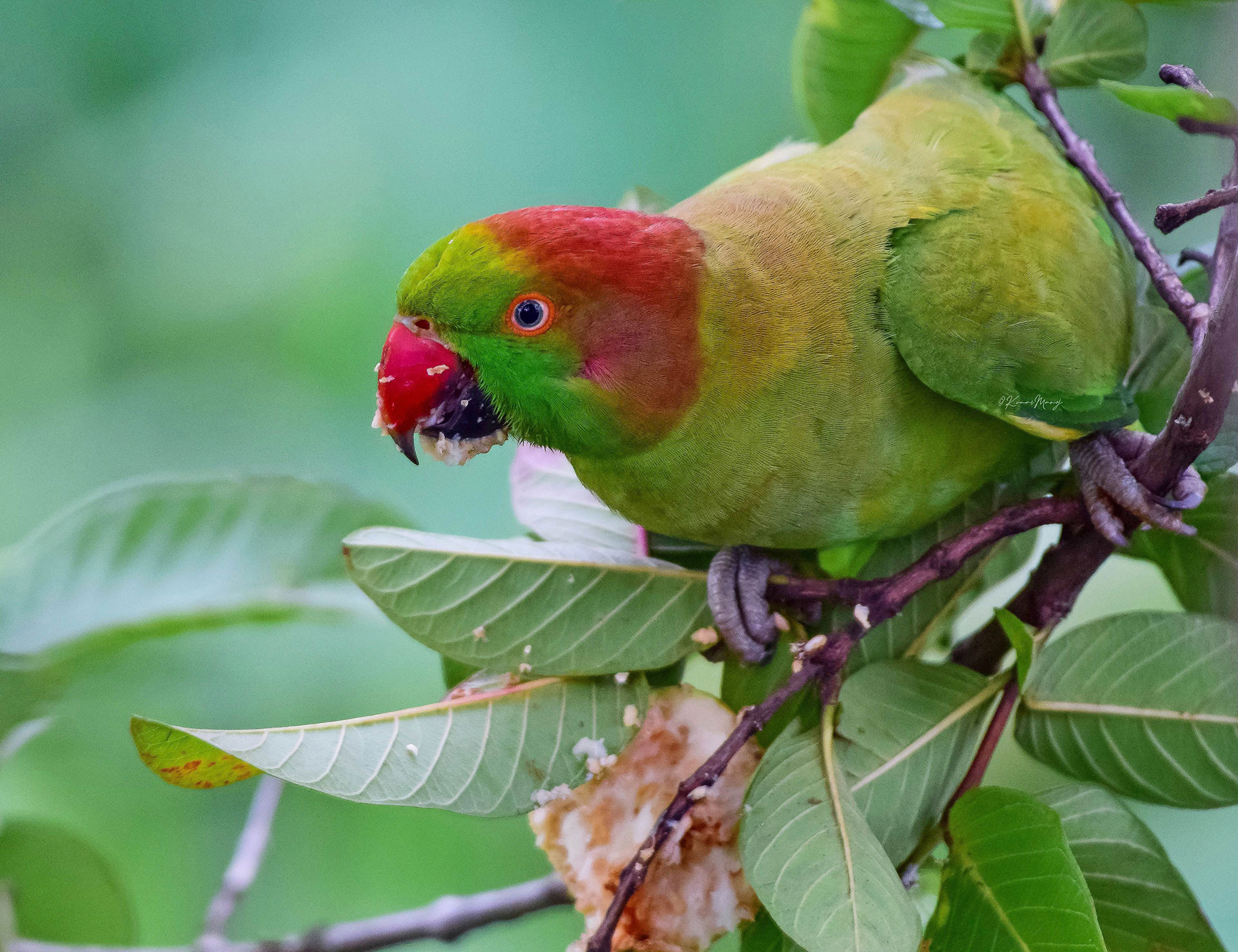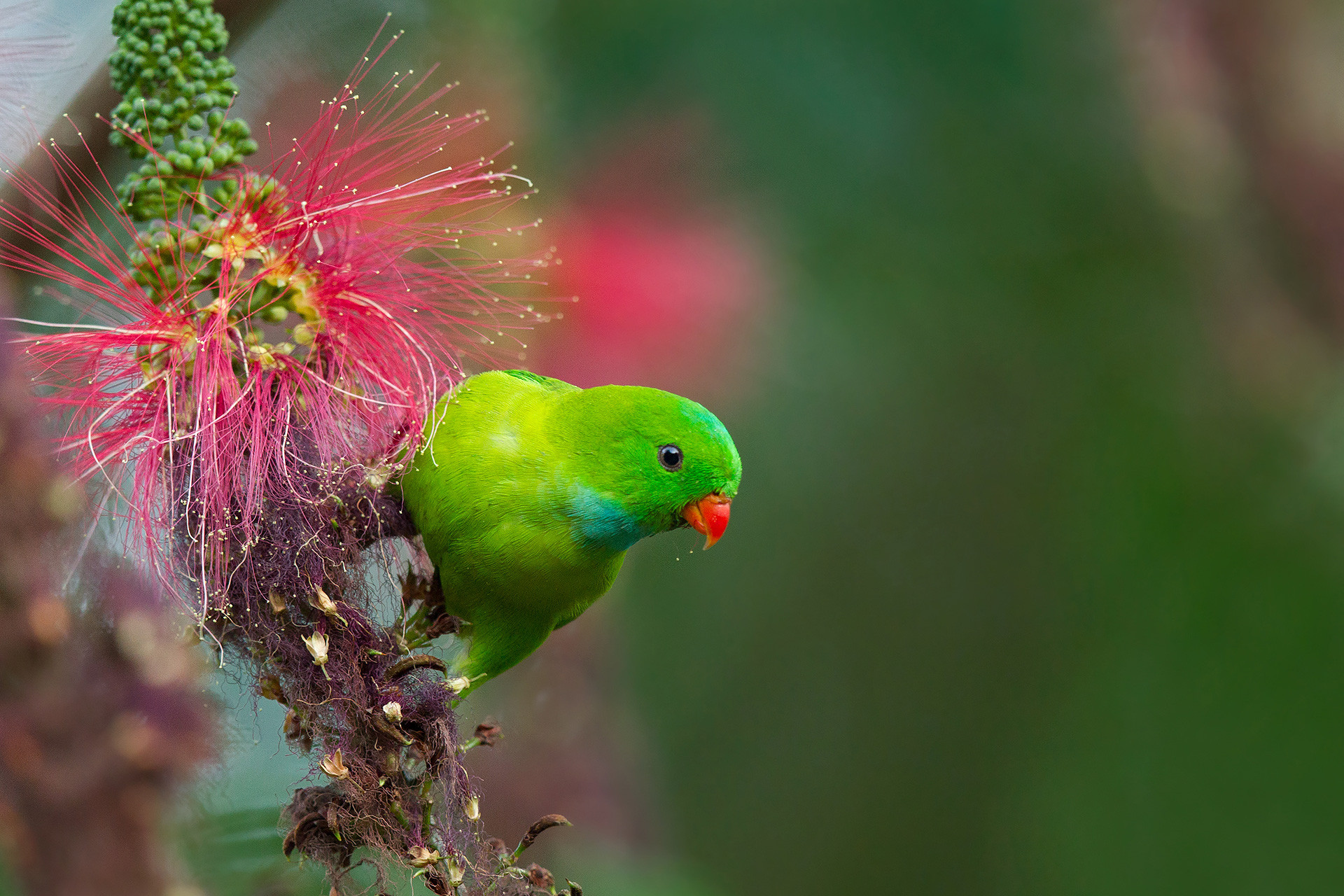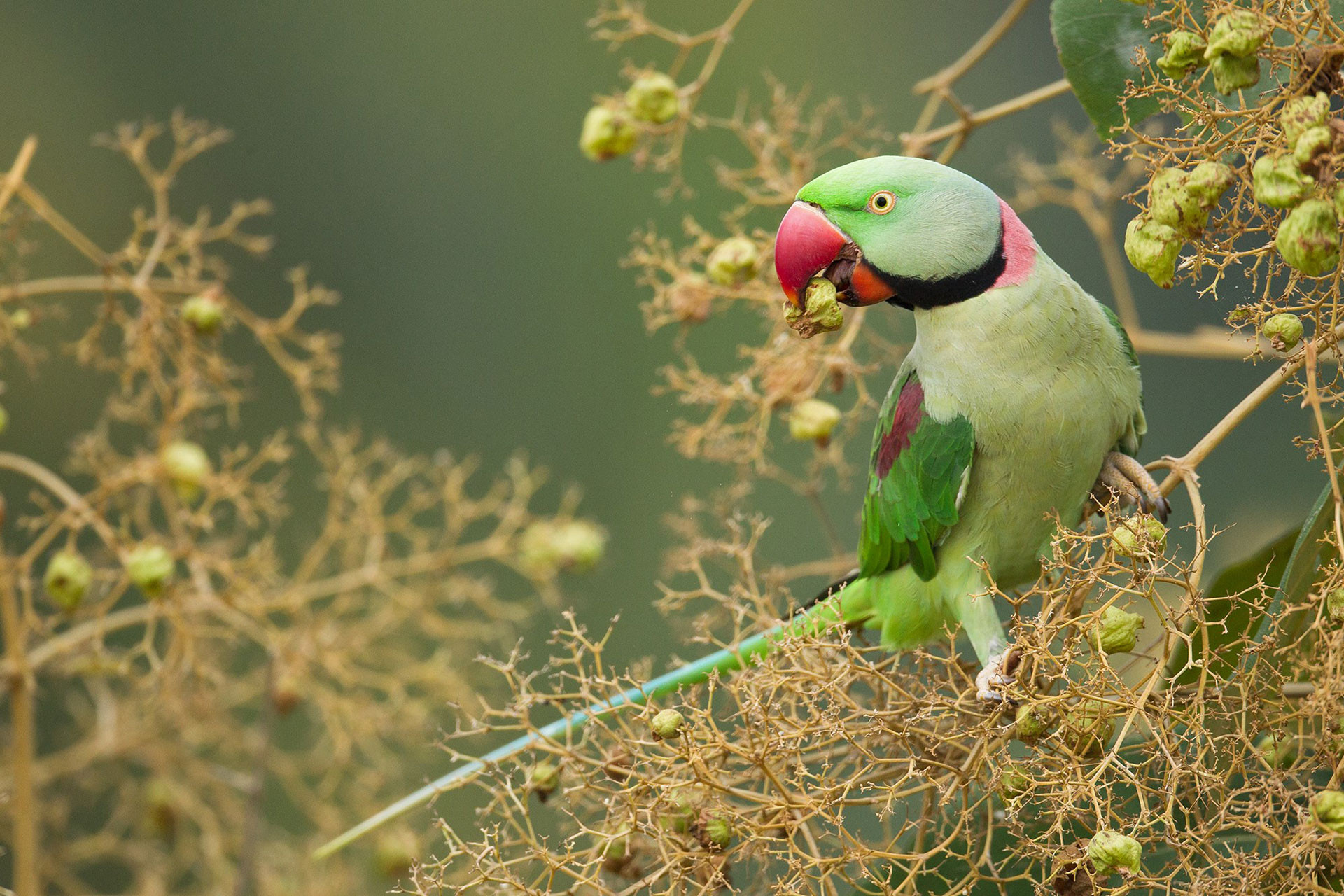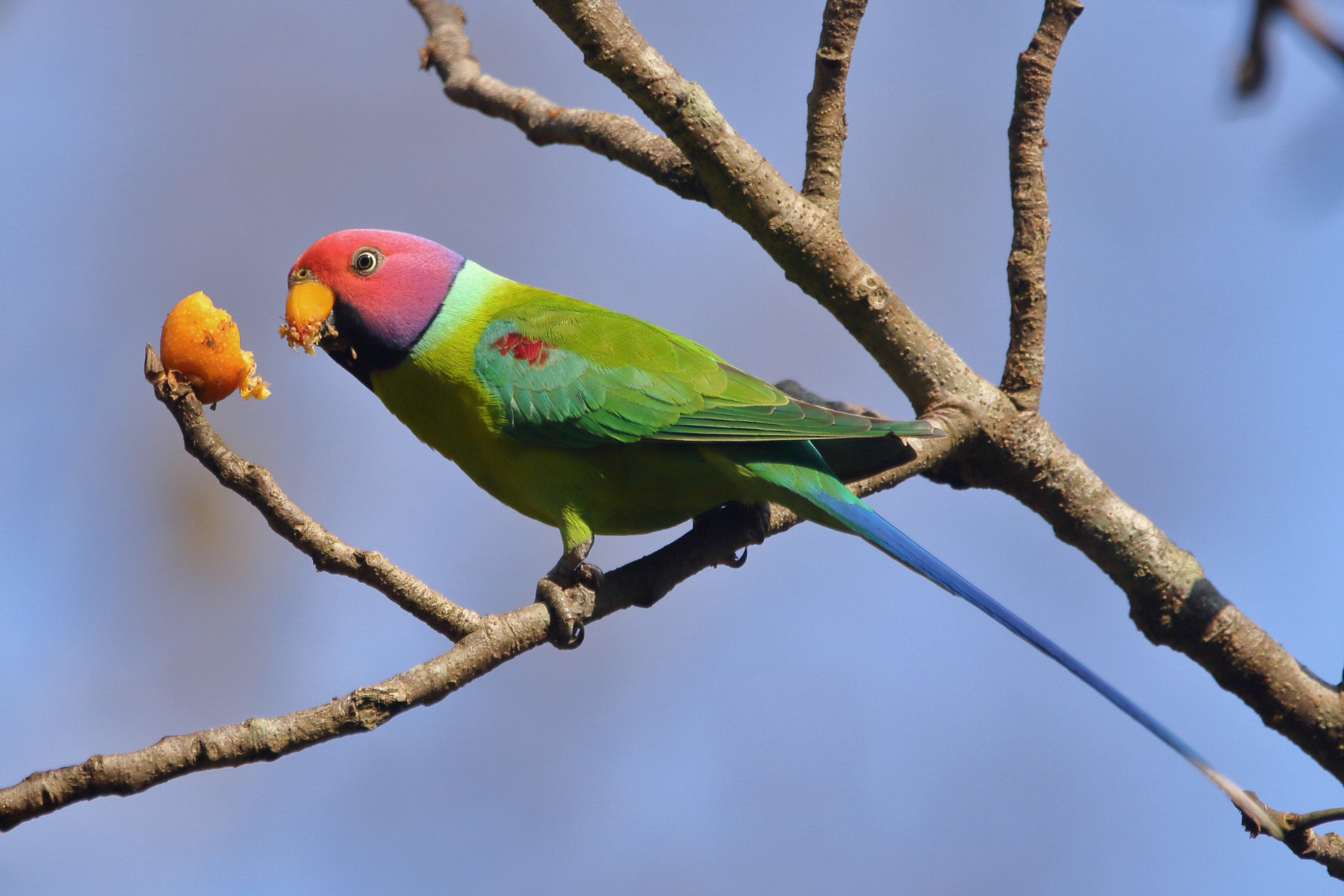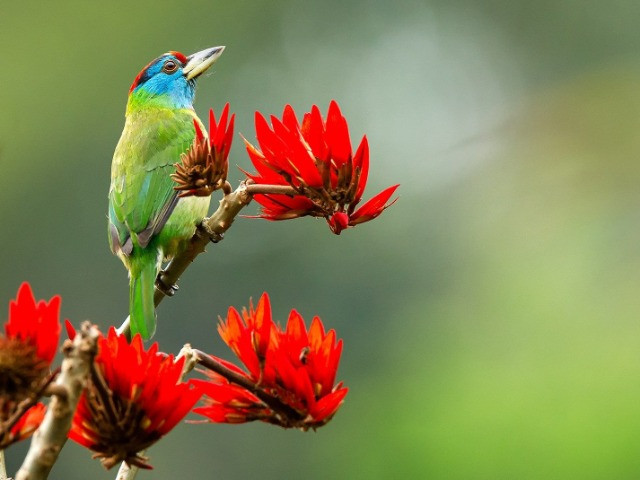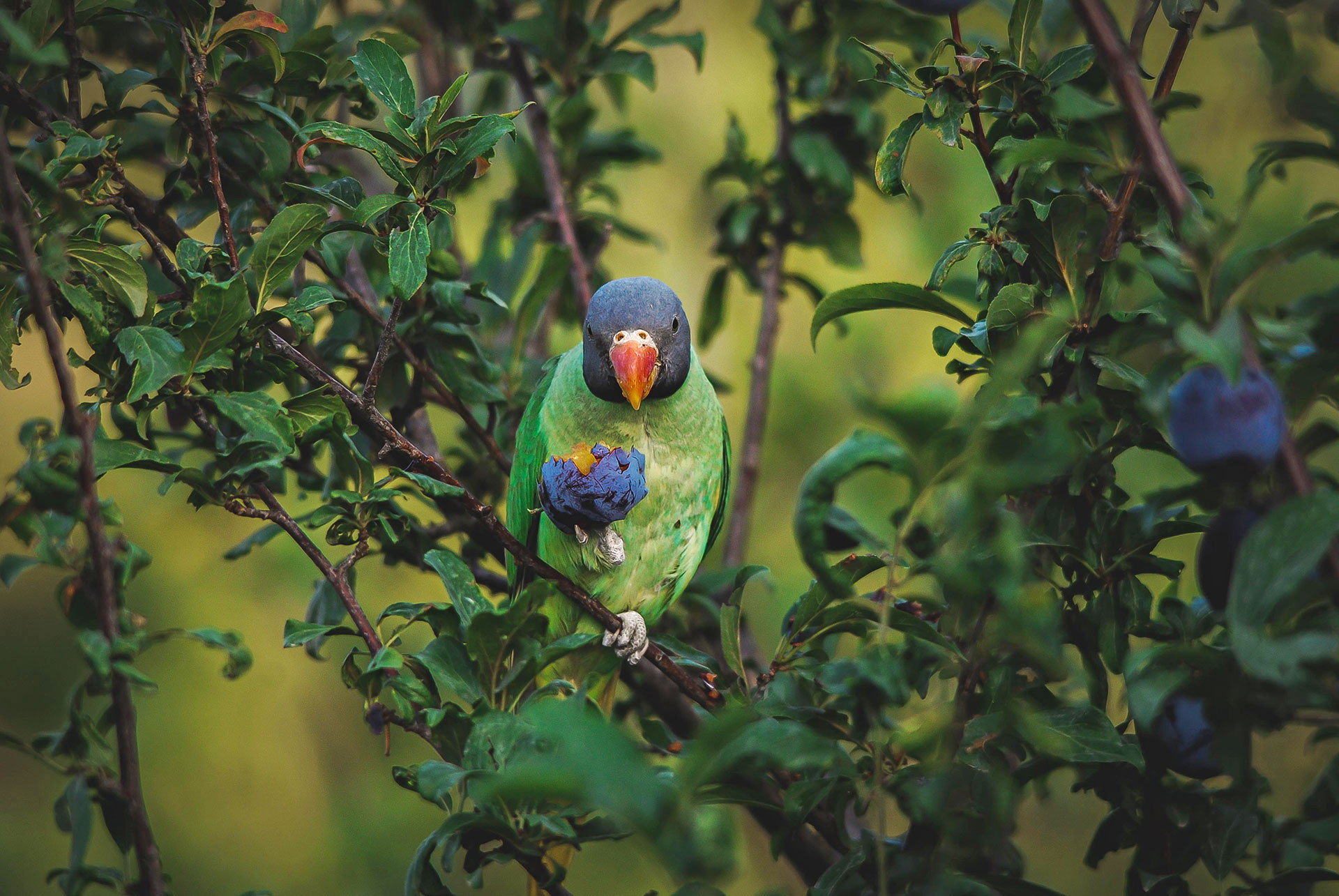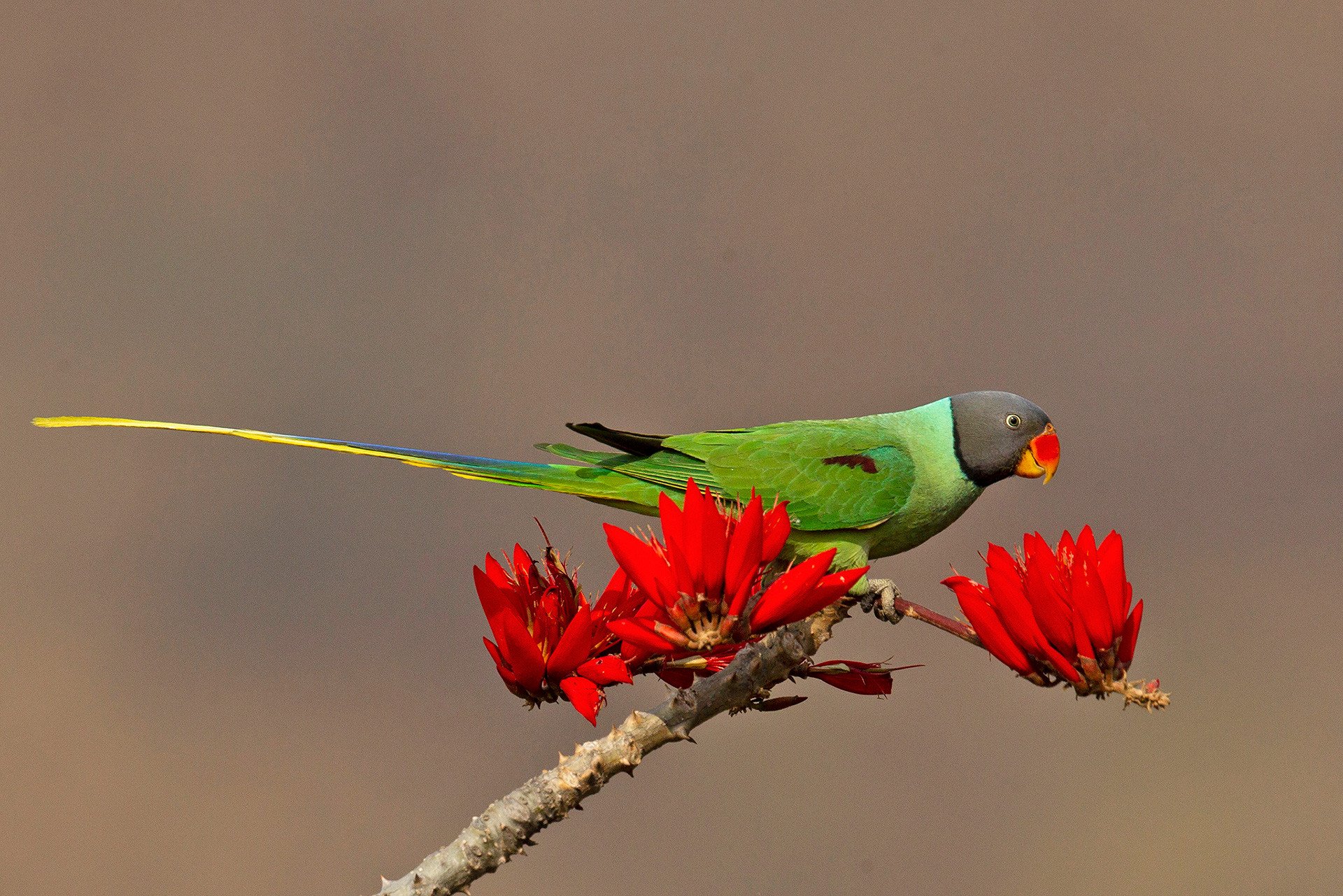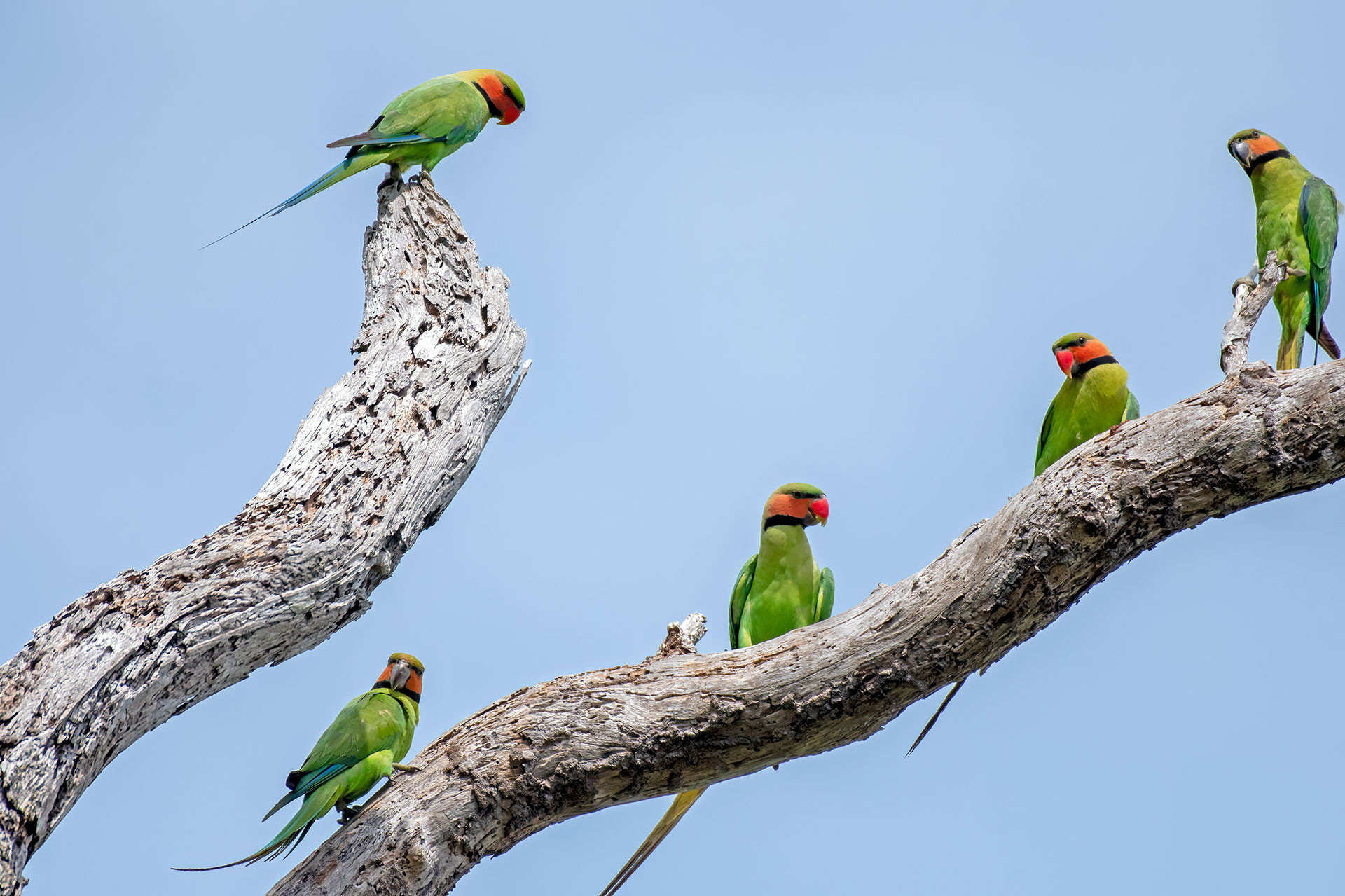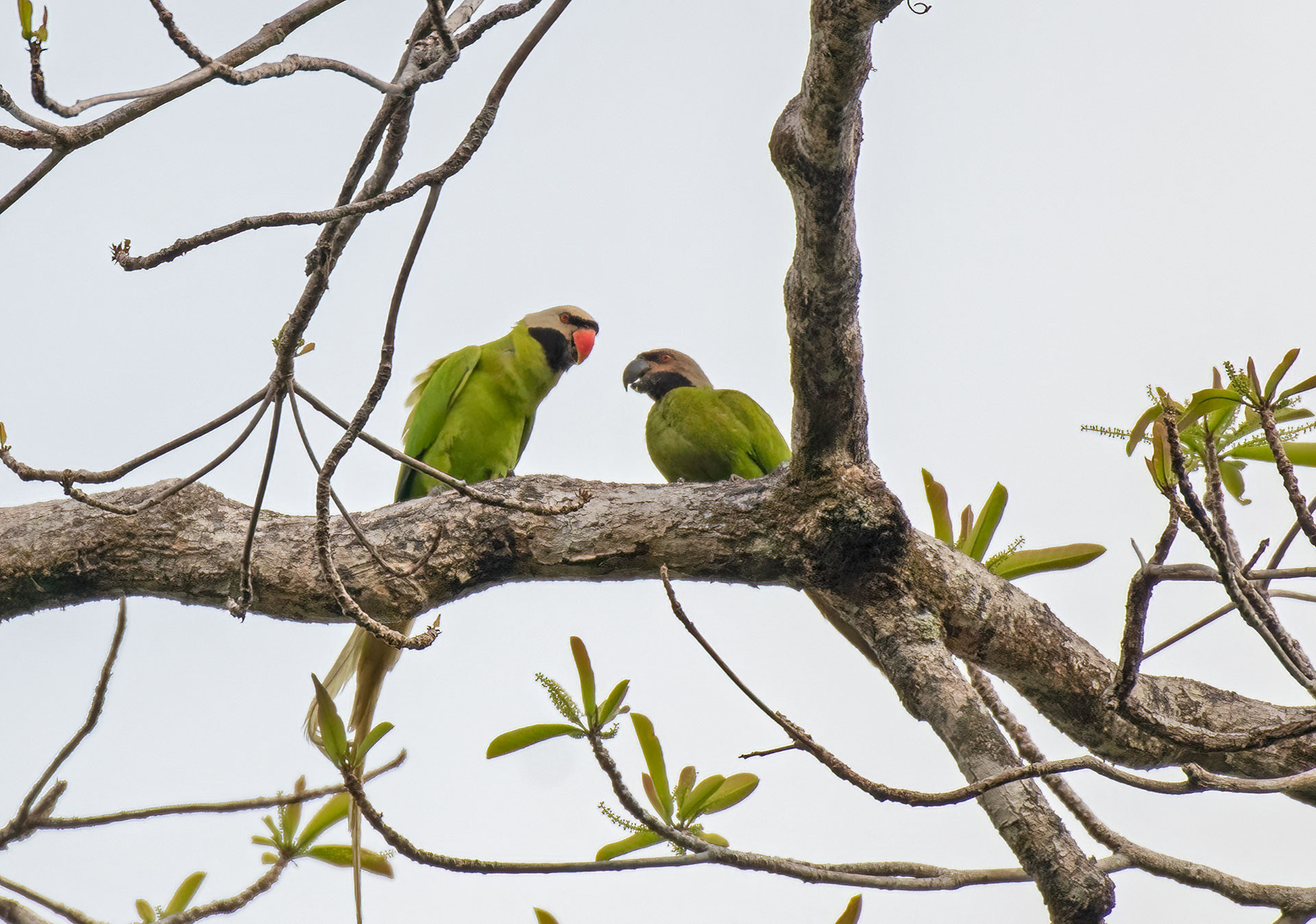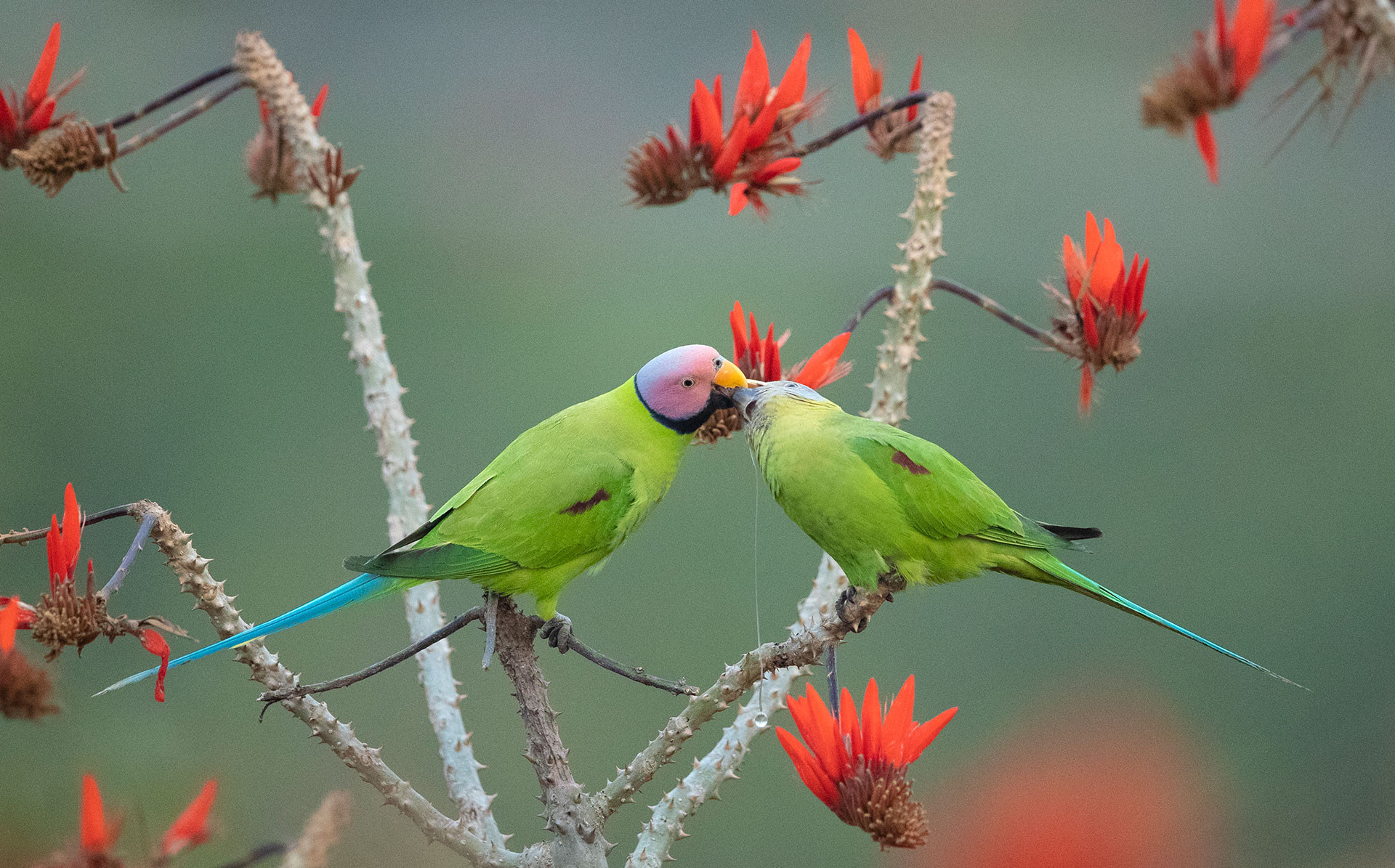Parrots and parakeets are two terms that are used so interchangeably that it is probably fair if you have come to the assumption that they are the same. But it is not just a case of "potayto, potahto."
Parrot is an umbrella term applied to a group of birds (more than 350 species) that belong to the order Psittaciformes. The order is subdivided into three superfamilies: the Psittacidae ("true" parrots), the Cacatuidae (cockatoos), and the Strigopoidae (New Zealand parrots). Whereas, parakeet is a name given to some 115 species of the subfamily Psittacinae (family Psittacidae). To put it simply, all parakeets are parrots, but all parrots are not parakeets.
Parakeets are small-sized, seed-eating parrots with long tapered tails that occur worldwide and are particularly abundant in the Indian subcontinent, throughout southeast Asia and the Pacific Islands, and tropical America. They are social birds that roam in large flocks but sadly are more predominantly familiar to us as caged birds and pets. In India, home to 11 native parakeet species, they are listed in Schedule IV Entry 50 of the Wildlife (Protection) Act, 1972. Therefore they are protected and cannot be trapped, kept in captivity or sold. The punishment for such offences is imprisonment up to three years or a fine of ₹25,000 or both.
Yet, the illegal trade of parakeets is very commonplace in the country. As recently as August 2021, 658 live parakeets were seized from traders on a bus plying from Banaras to Kolkata by the Wildlife Crime Control Bureau (WCCB) and West Bengal Crime Investigation Department (CID). To put a stop to these cruel, illegal trades, the demand needs to stop. And, this can only happen by raising awareness. Even today, people are unaware that it is illegal to keep birds like parakeets as pets.
Here is a quick primer, with images and call recordings, on the 11 parakeet species found in India.
Vernal Hanging-parrot (Loriculus vernalis)
IUCN Red List Status: Least Concern (Population stable)
Also known as the Indian Lorikeet, this hanging parrot species is mainly found in the southwestern parts of the country where it occupies forests and shrublands. Notice the blue colouration on the throat? This is indicative of a male, and in females, this is either absent or not that prominent. The Vernal Hanging-parrot nests within tree cavities and feeds on fruits, buds and seeds.
Rose-ringed Parakeet (Psittacula krameri)
IUCN Red List Status: Least Concern (Population increasing)
Also called Ring-necked Parakeets, Rose-ringed Parakeets are found in forests, shrublands, grasslands and wetlands throughout India. Weirdly, Great Britain has a population of Rose-ringed Parakeets that are believed to have bred from birds that escaped captivity. The parakeet species is also found in urban areas. The pinkish-black neck ring is prominent in males while it is grey in colour in female parakeets. Rose-ringed Parakeets build nests within tree holes. They feed on fruits, berries, leaves, shoots, vegetables and grains.
Alexandrine Parakeet (Psittacula eupatria)
IUCN Red List Status: Near Threatened (Population decreasing)
Widespread throughout India, the Alexandrine Parakeet is further divided into five subspecies. The parakeet can occupy a range of habitats like forests, deserts, shrublands and cultivated areas. Male and female parakeets can be distinguished by the black feathers on the neck, which are present in males and absent in females. Although they mainly nest in tree cavities, they are also known to build nests within buildings when present in urban areas. Alexandrine Parakeets feed on seeds, flowers, fruits, vegetables and buds.
Plum-headed Parakeet (Psittacula cyanocephala)
IUCN Red List Status: Least Concern (Population decreasing)
Endemic to the Indian subcontinent, Plum-headed Parakeets are found in woodlands, parks, montane forests, tropical and subtropical forest areas, as well as agricultural fields. Male parakeets have the signature plum-coloured heads, while females sport grey heads. Breeding pairs chisel holes in tree trunks where they build their nests. Plum-headed Parakeets feed on flowers, buds, nuts, grains, fruits and shoots.
Malabar Parakeet (Psittacula columboides)
IUCN Red List Status: Least Concern (Population stable)
Also known as the Blue-winged Parakeet, the Malabar Parakeet is endemic to the Western Ghats in southern India. The parakeet species prefers tropical, subtropical, moist and evergreen forests as well as shrublands as habitats. The blue colour of the wings and tail are more prominent in males compared to females. Malabar Parakeets prefer tall trees for nesting, and they mainly feed on wild fruits, berries, buds, leaves and seeds.
Red-breasted Parakeet (Psittacula alexandri)
IUCN Red List Status: Near Threatened (Population decreasing)
Red-breasted Parakeets are found in the northern and eastern parts of India. They reside in lowland forests, wooded areas and forest edges. Male parakeets have a dark red upper bill while the bill colour is black in females. Red-breasted Parakeets build nests within abandoned tree holes. Their diet consists of wild fruits, berries, flowers and cultivated fruits.
Grey-headed Parakeet (Psittacula finschii)
IUCN Red List Status: Near Threatened (Population decreasing)
Found mainly in the northeastern part of the country, Grey-headed Parakeets are residents of forests and are seen in open woodlands and areas with tall trees. Although similar in appearance, female parakeets have dull grey heads and lack the black-coloured neck colour, which is present in the male species. Grey-headed Parakeets nest in tree hollows and feed on seeds, fruits, flowers, leaves and buds.
Slaty-headed Parakeet (Psittacula himalayana)
IUCN Red List Status: Least Concern (Population stable)
Slaty-headed Parakeets are found in the northern parts of the country where they occupy elevations between 1,250 and 2,500 metres. They reside in hillside forests and woodlands. Male parakeets have dark red patches on their shoulder areas, which is absent in females. Slaty-headed Parakeets nest within tree hollows and also sometimes use abandoned nests of woodpeckers. They feed on crops, fruits, blossoms and grains.
Long-tailed Parakeet (Psittacula longicauda)
IUCN Red List Status: Vulnerable (Population decreasing)
Denizens of the Andaman and Nicobar islands, Long-tailed Parakeets prefer tropical, subtropical and evergreen forest areas as habitats. They are also found in plantations and gardens. While male parakeets sport bright colours and a red bill, females are duller in appearance and have a black bill. Long-tailed Parakeets build nests within tree holes. Their diet mainly consists of fruits, figs and berries.
Nicobar Parakeet (Psittacula caniceps)
IUCN Red List Status: Near Threatened (Population decreasing)
Also known as the Blyth's Parakeet, the Nicobar Parakeet, as the name suggests, is endemic to the Nicobar islands. Nicobar Parakeets prefer forest areas with tall trees as habitats. They have also been sighted in coconut and areca nut plantations. Male parakeets have distinct red bills, while in females, the upper bill is black. Just like their habitats, Nicobar Parakeets prefer tall trees for nesting. They primarily feed on the fruits of the Pandanus palm trees.
Blossom-headed Parakeet (Psittacula roseata)
IUCN Red List Status: Near Threatened (Population decreasing)
Residents of eastern India, Blossom-headed Parakeets are found in forest areas, shrublands and near cultivated lands. Male parakeets have plum-coloured heads that turn greyish-blue on the backside. Females, on the other hand, have dull greyish-blue heads. Blossom-headed Parakeets build nests within abandoned tree holes and in tree cavities. They feed on leaves, buds, fruits, berries and nuts.
